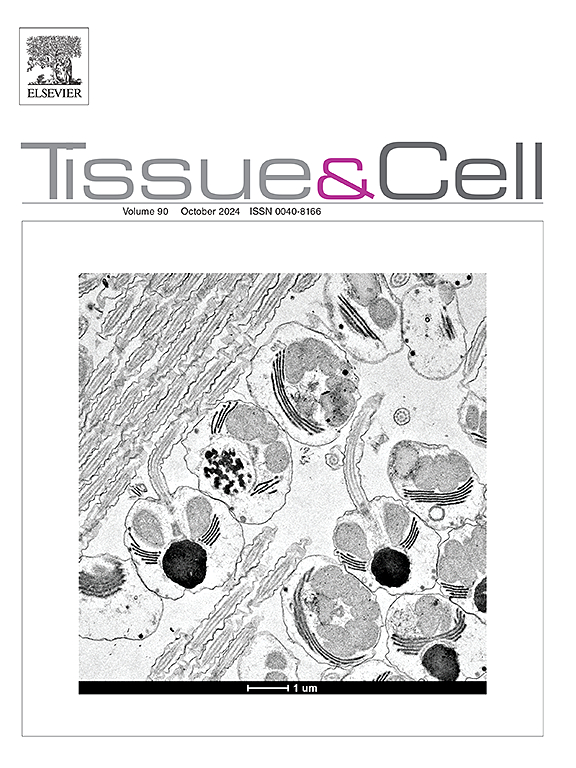Regulation of TGF-β1, PI3K/PIP3/Akt, Nrf-2/Keap-1 and NF-κB signaling pathways to avert bifenthrin induced hepatic injury: A palliative role of daidzein
IF 2.7
4区 生物学
Q1 ANATOMY & MORPHOLOGY
引用次数: 0
Abstract
Bifenthrin (BFN) is a noxious insecticide which is reported to damage various body organs. Daidzein (DZN) is a natural flavone with excellent pharmacological properties. This research was conducted to evaluate the alleviative strength of DZN to counteract BFN prompted liver toxicity in male albino rats. Thirty-two rats were divided into 4 groups i.e., the control, BFN (7 mg /kg), BFN (7 mg/kg) + DZN (20 mg/kg) and DZN (20 mg/kg) alone group. The biochemical assessment was performed by using qRT PCR as well as standard ELISA protocols. The findings are validated by applying pharmacodynamic techniques including molecular simulation. It was observed that BFN reduced the gene expressions of phosphoinositide 3-kinase (PI3K), phosphatidylinositol-3, 4, 5-triphosphate (PIP3), Protein kinase B (Akt), nuclear factor erythroid 2–related factor 2 (Nrf-2) while promoting the gene expressions of Kelch-like ECH-associated protein 1 (Keap-1). Moreover, BFN notably reduced the activities of glutathione reductase (GSR), heme-oxygenase-1 (HO-1), glutathione peroxidase (GPx), superoxide dismutase (SOD), and catalase (CAT) while elevating the levels of reactive oxygen species (ROS) and malondialdehyde (MDA). BFN promoted the levels of matrix metallopeptidase 2 (MMP-2), Procollagen III N-terminal Pro-peptide (PIIINP), alkaline phosphatase (ALP), transforming growth factor-beta-1 (TGF-β1), aspartate aminotransferase (AST), tissue inhibitor of matrix metalloproteinases 1 (TIMP1), and alanine aminotransferase (ALT). The levels of nuclear factor- kappa B (NF-κB), interleukin-1 beta (IL-1β), tumor necrosis factor-alpha (TNF-α), interleukin-6 (IL-6) and cyclooxygenase-2 (COX-2) were increased following the BFN intoxication. BFN enhanced the expressions of cysteine-aspartic acid protease-3 (Caspase-3) and Bcl-2-associated X protein (Bax) while suppressing the gene expression of B-cell lymphoma-2 (Bcl-2). Moreover, BFN disrupted the normal histology of liver tissues. Nonetheless, DZN treatment remarkably alleviated hepatic damages owing to its antioxidative, anti-apoptotic as well as anti-inflammatory abilities. However, DZN supplementation remarkably safeguarded which is further confirmed by in-silico assessment.
求助全文
约1分钟内获得全文
求助全文
来源期刊

Tissue & cell
医学-解剖学与形态学
CiteScore
3.90
自引率
0.00%
发文量
234
期刊介绍:
Tissue and Cell is devoted to original research on the organization of cells, subcellular and extracellular components at all levels, including the grouping and interrelations of cells in tissues and organs. The journal encourages submission of ultrastructural studies that provide novel insights into structure, function and physiology of cells and tissues, in health and disease. Bioengineering and stem cells studies focused on the description of morphological and/or histological data are also welcomed.
Studies investigating the effect of compounds and/or substances on structure of cells and tissues are generally outside the scope of this journal. For consideration, studies should contain a clear rationale on the use of (a) given substance(s), have a compelling morphological and structural focus and present novel incremental findings from previous literature.
 求助内容:
求助内容: 应助结果提醒方式:
应助结果提醒方式:


